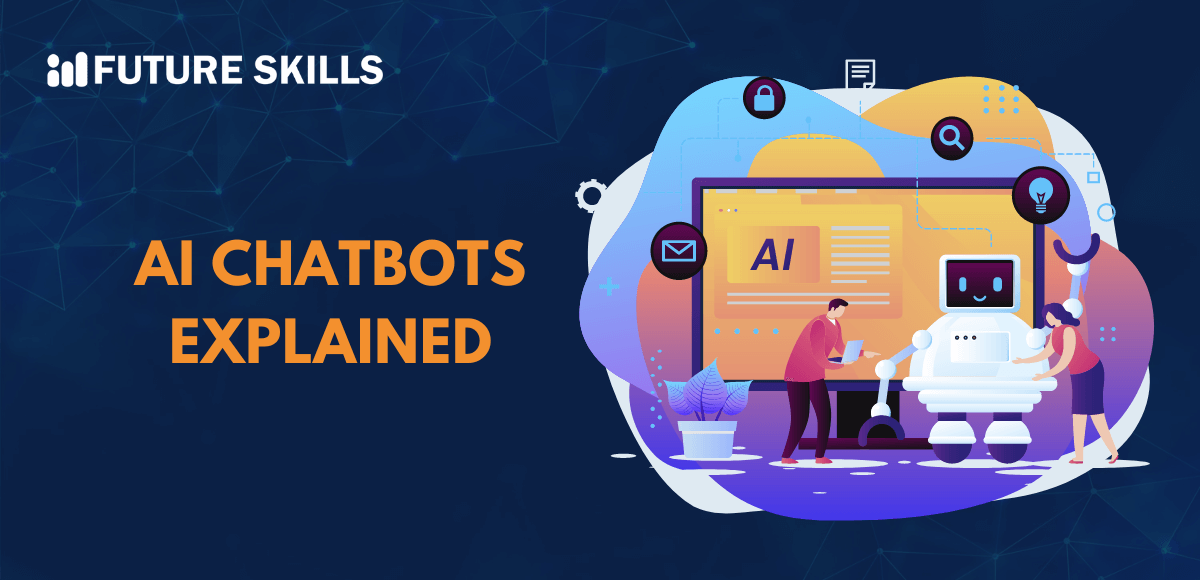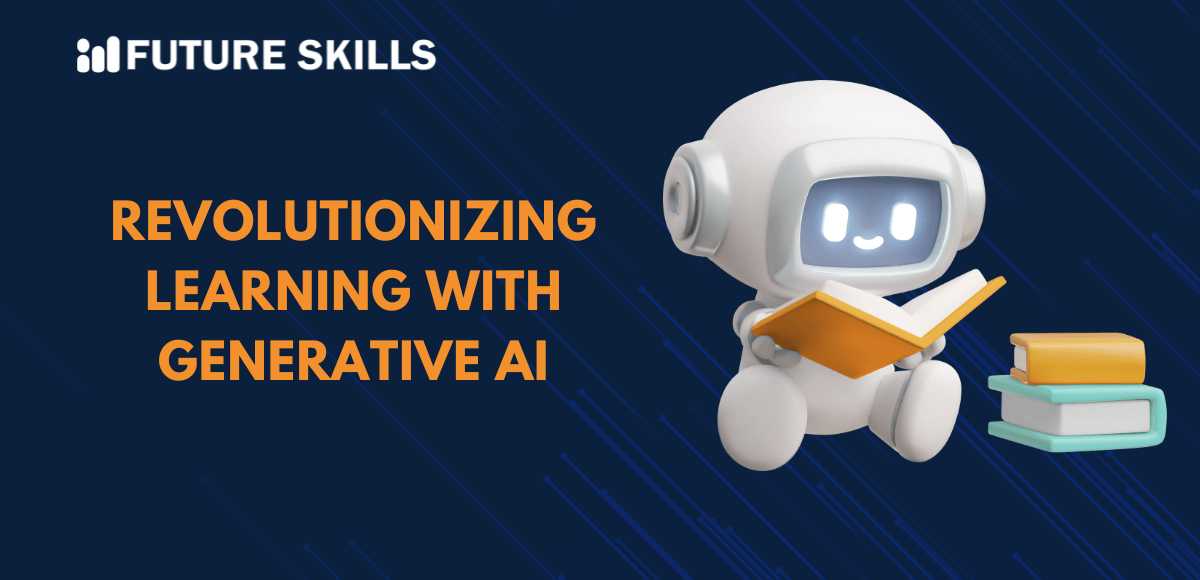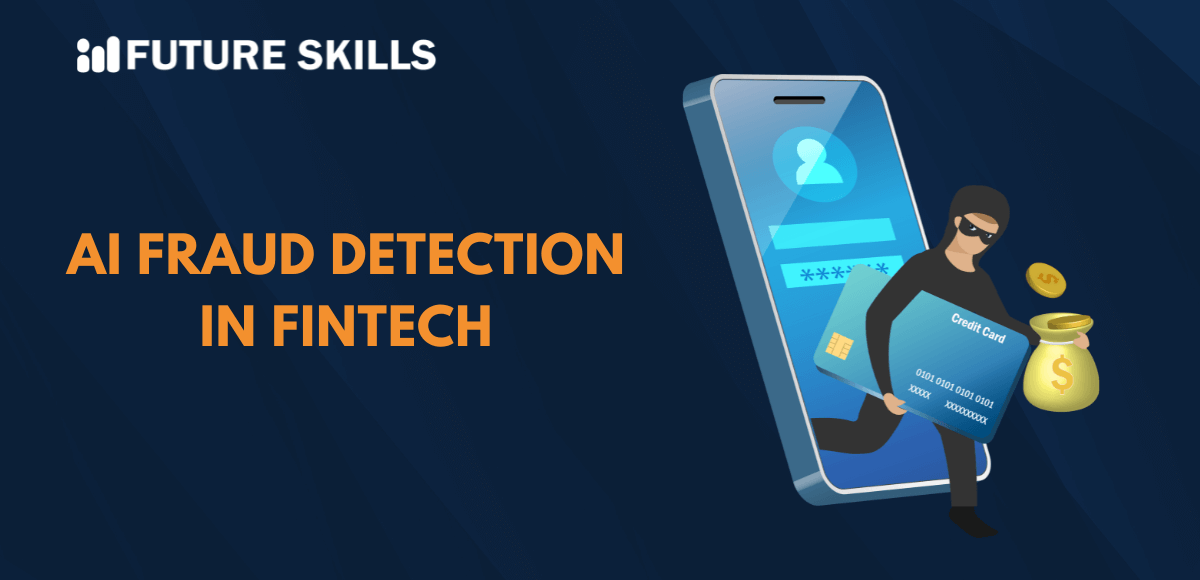Artificial intelligence is the most innovative and powerful technical advancement in the modern digital landscape. As a matter of fact, AI has become an integral part of our everyday lives in many ways. For example, AI can help you order coffee, find answers to specific questions, or find your way through complex equations. How has AI found mainstream acceptance? The answer points out AI chatbot applications that have been responsible for simplifying different tasks.
AI chatbots serve as the bridge between artificial intelligence and users who want to elevate their digital experience. AI chatbots are software programs that can interact with humans in natural language. It is also important to note that not all chatbots utilize artificial intelligence, as some of them are rules-based. Let us learn more about AI chatbots, how they work, and the different examples of chatbots.
Want to gain practical skills in using OpenAI API and implementing API calls to facilitate LLM interactions, Enroll now in the Certified Prompt Engineering Expert (CPEE)™ Certification.
What are AI Chatbots?
The best approach to understanding the magic of AI chatbots involves learning their definition. The answers to ‘What is AI chatbot’ generally paint them as chatbots that use artificial intelligence to engage in conversations similar to the ones that you would have with another human. AI chatbots leverage natural language processing or NLP to their advantage for interpretation of human language.
The power of NLP empowers AI chatbots to operate almost autonomously. In simple words, AI chatbots can understand instructions beyond the pre-defined commands and deliver responses according to existing data. As a result, users can lead the conversations alongside expressing their intent in natural language.
Another distinct aspect of the fundamentals of AI chatbots explained for beginners reflects their ability to learn from their previous conversations. AI chatbots can adapt and modify their responses according to different patterns in new situations. Therefore, AI chatbots can find applications in different areas, such as making predictions about the preferences of site visitors and comprehensive analysis of the feelings of customers.
Working Mechanism of AI Chatbots
The next important highlight to understanding AI chatbots points towards their working mechanisms. Most people refrain from the use of AI chatbots, believing that they need more technical expertise to use them. However, you don’t have to be an expert in NLP or a programmer to use AI chatbots according to your needs. The only requirement for using an AI chatbot is an in-depth understanding of how it works.
The simplest explanation for the working of AI chatbots suggests that they take input data, interpret it, and ensure translation into relevant outputs. When a user asks a question, AI chatbots begin with an analysis of their intent alongside other factors such as sentiment and tone. Subsequently, it helps deliver the ideal answer.
All types of AI chatbots need significant volumes of conversational data to complete their work with accuracy and efficiency. Every AI chatbot needs a comprehensive training process in which it can learn how to interpret the context of a user’s words. As a result, the chatbot can develop the ability to respond to complex queries with a natural and conversational approach.
You might have some concerns about training an AI chatbot from scratch as a beginner. However, different chatbots examples suggest that they are already pre-trained with billions of conversations alongside topics related to a specific business. You can also leverage libraries to customize responses to fit specific topics and ensure the addition and creation of examples for such topics.
Level up your ChatGPT skills and kickstart your journey towards superhuman capabilities with Free ChatGPT and AI Fundamental Course.
Are AI Chatbots better than Rule-based Chatbots?
Not all chatbots use artificial intelligence, and some of them follow a rule-based model. Rule-based chatbots offer tightly structured responses according to user inputs. They can recognize only the instructions and questions that have been programmed into them. On the other hand, AI chatbot applications are considerably dynamic and utilize a combination of machine learning and natural language processing. As a result, they can respond to questions and commands that fall beyond the pre-programmed scripts.
Rule-based chatbots might not be as flexible as AI chatbots. However, they have certain advantages. For example, you can create predictable and controlled digital experiences to guide the audience towards their goals. On the other hand, you would have to rely on AI chatbots to handle complex queries or understand massive datasets.
The use cases of AI chatbots explained for beginners also paint a clear picture of their potential. AI chatbots can help with sentiment analysis, developing the ability to adapt to user preferences and learning behavioral patterns. Therefore, marketing professionals can use AI chatbots to learn more about their target audience and customers.
What are the Popular Variants of AI Chatbots?
The discussions about AI chatbots also draw attention to different variants of innovative AI tools. You can find different types of AI chatbots tailored to achieve specific goals.
One of the most popular variants of AI chatbots is the conversational AI chatbot. Conversational AI chatbots utilize AI models such as GPT-4 to generate text in natural language and create real-time conversations. Such types of chatbots are generally implemented in the domain of customer service to offer faster and more relevant answers to customer questions.
The next important type of AI chatbot has also become one of the favorites in the business landscape. Marketing automation chatbots can leverage templates alongside workflow automation to streamline the marketing process. Such types of chatbots can serve prompts to users to take specific actions according to user input. On top of it, the marketing automation chatbots can also offer personalized recommendations to users.
Another notable variant that pops up in discussions on “what is AI chatbot” points to custom AI chatbots. Custom chatbots, as the name implies, are built to address the specific needs of users. The distinctive highlight of custom AI chatbots is the assurance of advanced AI features and capabilities. For example, they can use NLP to understand complex conversations alongside offering more personalized responses. Custom AI chatbots generally find applications in virtual assistants to guide users through complex processes or tasks.
The different variants of AI chatbots showcase the versatility of these tools and the potential for using them in different industries and applications. You can use them for marketing automation or customer service according to your requirements.
Can You Build AI Chatbots?
The mere mention of terms like artificial intelligence and machine learning makes the thought of building your own AI chatbot a little bit challenging. However, you can find many ways to craft new AI chatbot applications with your own chatbot that stands out. First of all, you need to think of the objectives of the chatbot and the tasks you want it to perform. The next important requirement for building your AI chatbot is a strategy that is planned with the help of comprehensive research. Subsequently, you have to provide the chatbot with all the data it requires to accomplish your desired goals.
The process of creating an AI chatbot might appear overwhelming in the initial stages. Interestingly, it is quite simple due to different reasons. For example, you can find code-free chatbot development tools. You can create an AI chatbot without any experience in coding. On top of it, you can also capitalize on the flexibility of integrating AI chatbots into different types of customer communication channels.
Some of the popular alternatives that you might want to try include Facebook Messenger, WhatsApp, and Telegram. This benefit can boost the use of AI chatbots across different platforms, thereby improving accessibility. The final stage before deploying your AI chatbot is testing. The recommended best practice for testing AI chatbots focuses on testing it on a local server to identify potential issues.
Do AI Chatbots Have Limitations?
When you have AI-powered virtual assistants who learn and improve continuously, it is difficult to imagine the possibilities of limitations. The diverse array of chatbot examples, such as Microsoft Bing AI chat, ChatGPT, and Google Gemini, have showcased the impressive potential of AI chatbots.
However, it is also important to look out for their limitations before you use them. One of the most notable limitations of AI is the lack of empathy. AI chatbots can learn context of conversations and patterns in language effectively but fail to show empathy or morality. The answers by AI chatbots can be significantly insensitive or may hurt the feelings of users.
Another prominent limitation of AI chatbots explained their inability to offer correct responses in most cases. You can end up with biased or incorrect results by AI chatbots as they rely on the training data. On top of it, they have a limited understanding of natural language, which may affect their responses.
Final Words
The diverse capabilities of AI chatbots have made them one of the most prominent tools for customer service, marketing automation, and many other uses. On top of it, the rise of different types of AI chatbots for applications in different industries has fuelled the growth of chatbots. Most importantly, AI chatbots help bring artificial intelligence closer to people by breaking the conventional barriers to accessibility.
You can find tools that can help you build your own AI chatbot for custom applications. Furthermore, the evolution of AI chatbots will help in resolving their existing limitations. Dive deeper into the world of AI chatbots, the technologies that power them, and their applications with credible training resources now.





